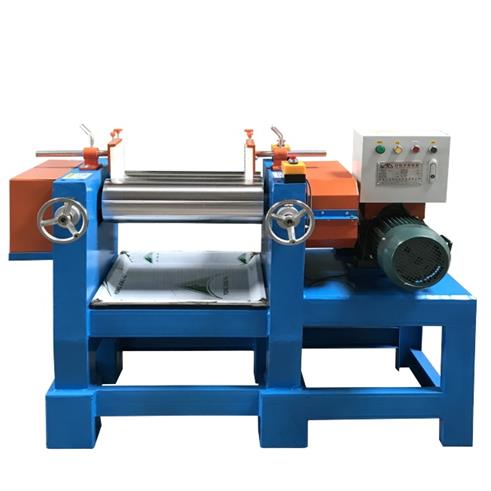A Rubber Mixing Machine, also known as a Rubber Mixer or Rubber Kneader, is a specialized industrial equipment used in the rubber manufacturing industry. It plays a crucial role in the rubber processing and production of various rubber products. These machines are designed to mix and process raw rubber materials to achieve the desired properties, consistency, and quality required for specific applications. Here are some key aspects of a Rubber Mixing Machine:

1. Mixing Rubber Compounds:
The primary function of a Rubber Mixing Machine is to blend and knead rubber compounds. It combines raw rubber materials with various additives, such as fillers, curing agents, accelerators, and pigments, to create a homogeneous mixture. This process is essential for achieving the desired mechanical and chemical properties in the final rubber product.
2. Types of Rubber Mixers:
There are different Types Of Rubber Mixing Machines, including open mill mixers and internal mixers. Open mill mixers consist of two counter-rotating rolls that process rubber compounds, while internal mixers, like the Banbury Mixer, use a closed chamber with rotating screws and blades. The choice of mixer depends on the specific requirements of the rubber compound.
3. Temperature Control:
Rubber Mixing Machines often feature temperature control mechanisms to heat and cool the rubber during processing. Precise temperature control is crucial for vulcanization, a critical step in rubber processing, which involves curing the rubber at specific temperatures to achieve the desired properties.
4. Batch and Continuous Mixing:
Rubber Mixers can operate in both batch and continuous mixing modes. Batch mixing involves processing a specific quantity of rubber compound at a time, ensuring better control over the mixing process. Continuous mixing, on the other hand, allows for a continuous production flow, suitable for high-volume manufacturing.
5. Automation and Control Systems:
Modern Rubber Mixing Machines are equipped with advanced automation and control systems. These systems enable precise monitoring and adjustment of various parameters such as mixing speed, temperature, and ingredient ratios. Automation enhances efficiency, consistency, and overall quality in the rubber production process.
6. Safety Features:
Rubber Mixing Machines come with safety features to protect operators and ensure safe operation. These features may include emergency stop buttons, safety interlocks, and guards to prevent access to moving parts during operation.
Rubber Mixing Machines are indispensable in the rubber industry, enabling the production of high-quality rubber compounds used in a wide range of products, including tires, hoses, seals, and various industrial goods. Their ability to blend raw materials uniformly and efficiently is essential for the consistent quality and performance of rubber products in diverse applications.